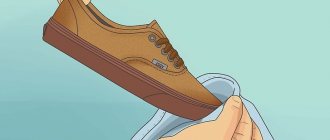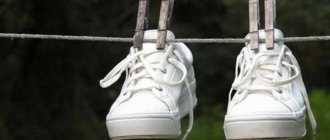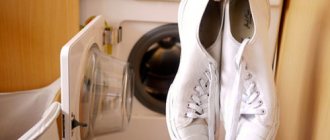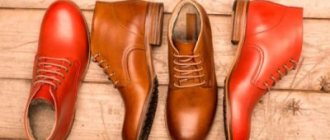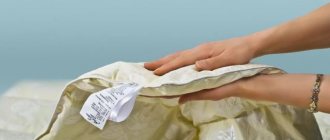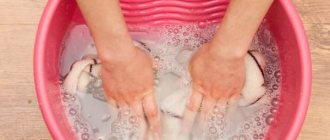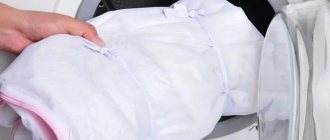Football boots on the shelf of a sports store look immaculate, but after a breathtaking game they are instantly covered with dust, particles of dirt, and stuck blades of grass.
Getting rid of dirt on sports shoes is quite difficult - without experience, it is easy to deform the upper part and damage the sole. To avoid unpleasant disappointment after the first wash, it is recommended that you carefully familiarize yourself with the features of washing boots.
Bleaching has its own tricks and rules, which are also better to understand in advance. Strict adherence to the requirements will quickly return your favorite accessory to its original appearance.
What are boots, the main differences from sneakers
Boots are special shoes designed for playing football, which have many differences from sneakers. One of the advantages is the presence of spikes that do not allow you to roll out on various synthetic or natural surfaces of the football field - grass, soil, special coatings.
When purchasing, be sure to take into account the type of surface you will play on. If it is difficult to make a choice on your own, it is better to seek the help of a specialist who will tell you in detail what to give preference to.
Models for children have a large number of spikes (24 pieces). For adults and teenagers who feel confident on the football field, it is recommended to choose a sports accessory that has a smaller number of spikes - 6 or 8.
The main difference from sneakers is that the pressure is distributed evenly on the foot, which significantly reduces the load on the lower limbs and increases the comfort of training, regardless of the hardness of the field surface. Another advantage is that the running speed increases significantly due to the spikes.
Types of boots
Basic rules for washing boots
If sports shoes were purchased in a specialized store, information about washing must certainly be provided on the packaging. A mandatory rule is to carefully study all the manufacturers’ recommendations. When washing, you should take into account the temperature of the water, detergents, which process, manual or machine, should be chosen.
Experiments are not encouraged - it is quite easy to ruin the appearance of the boots. Even careful handling does not guarantee the absence of unpleasant consequences after getting rid of dirt.
You need to wash your boots and socks especially carefully. Incorrectly selected temperature conditions and aggressive detergents can irreversibly damage a sports accessory.
For white sports shoes, you will have to take care of a bleaching agent in advance. Powerful agents that can cause tissue damage are not recommended. Despite high-quality materials, even the famous brands Adidas and Nike are not immune to stains and thinning fibers.
ARTICLE FOR YOU
How to wash ballet flats and remove stains in the washing machine and by hand
Regardless of the washing method chosen, it is recommended to first clean the soles - they are the ones that accumulate dirt and dust. Start with a simple process - shake off any remaining soil by tapping the surfaces. You should not rub - spikes, especially those with metal tips, can damage the sole.
To clean the sole, use a soft brush and carefully remove dirt between the studs. It is better to use a toothbrush in the front part - thanks to its small size, it will be easy to remove dirt.
It is forbidden to use sharp devices - even a wooden stick can damage the surface. Only after removing the dirt is it recommended to begin the main process - washing the product.
Hand washing - rules, recommendations
The most gentle, gentle way to get rid of dirt, dust particles, and stains is hand washing. Another advantage of not using a washing machine is that deformation of the product is completely eliminated.
Before washing your boots, you should prepare a soap solution. Do not use ordinary laundry soap - gel, dishwashing detergent, good powder will quickly remove stains without harming the material of the sports accessory.
Step-by-step washing of sports shoes with spikes:
- Unlace your shoes, soak the laces, apply a concentrated soap solution (for white laces that are stained with yellow, it is recommended to use a bleach or soda solution).
- Using a brush, a soap solution whose temperature does not exceed 40 degrees, walk over the surface of the boots, be sure to move from the holes for the laces to the sole - this will allow the liquid to naturally flow down without accumulating in the fabric, without causing stains.
- If there are stains on the surface, rub with a toothbrush, being careful not to damage the material. Keep your hand inside the shoe.
- The last thing to clean is the tongue; after removing the laces, access to it is completely open.
- For light stains, it is better to use a stiff dishwashing sponge.
- Rinse the surface with clean water and water the shoes until a clear liquid without soap suds begins to drain.
ARTICLE FOR YOU
How to wash Converse correctly: in the washing machine and by hand
Finish washing by removing residual moisture with a napkin or soft towel.
Wet cleaning of boots
Proper care is the key to long-term use
- After each end of the game, you need to loosen the lacing in order to remove the foot without excessive force. This rule will make it possible to maintain the shape of the boots, heel holders and holes for the laces.
- After each workout, the boots should be cleaned of dirt using a damp sponge. It is prohibited to use household chemicals to clean them, because... Such products can discolor the uppers of shoes in places. If the upper material of the boots is made of genuine leather, then it is recommended to treat the shoes with shoe polish impregnation. This treatment will help you restore their original color, as well as improve their elasticity and make them less permeable to water. It is contraindicated to use shoe polish or any other impregnation for the care of synthetic shoes.
- If you've played in football boots in wet conditions, you'll need to use a waste toothbrush to clean off dirt and damp soil.
- In football boots with replaceable studs, you need to unscrew the studs several times a season and wipe them with a damp sponge. In order to prevent rust from appearing on metal threads, it is advisable to use a lubricant.
- Wet boots should not be dried near any heating devices. You need to put crumpled newspaper inside the shoes, which over time will be able to absorb excess moisture. Drying using newspapers will take some time, but your shoes will not be deformed. The thing to remember is that you need to loosen the replacement spikes while drying, and tighten them again before training or playing. If you tighten the spikes too much, you can even break the thread, so it is recommended to be careful.
Football boots have always been and remain one of the most important elements in a football player’s equipment, which means that maintaining them in proper condition is the primary task of any athlete. You will find all the necessary components for caring for your boots in
The right cleats can greatly improve your game, but in addition to choosing the right cleats, they also require proper care.
We've put together 10 non-negotiable tips on how to care for your soccer shoes.
Following these simple rules will significantly extend the life of your boots.
1.) Choose cleats whose shape most closely matches the shape of your foot.
One of the main reasons why cleats become unusable is due to excessive pressure on certain parts of the shoe. For example, a wide foot in narrow boots will inevitably lead to a tear at the junction with the sole. Likewise, cleats that are too small will result in torn cleats. The right decision is to try on the boots when purchasing and choose the size that suits your feet.
2.) Lace your cleats correctly.
When you put on your boots before a game, completely loosen the laces down to the last holes. This will ensure comfortable tightness of the shoe and uniform distribution of shoe pressure on the foot.
3.) Wear boots that match the surface.
It is very important to choose the right sole for your playing surface. Then put on the boots and tighten the laces one by one. This approach will not only provide better traction on the turf, but will also reduce the likelihood of injury. Artificial pitches are becoming increasingly popular and we strongly recommend playing on them with turf or boots marked AG - 24 studs on the sole. When playing on artificial turf, the studs wear out much faster than on natural turf.
4.) Walking in cleats on hard surfaces.
It would seem obvious advice not to walk in boots on asphalt and hard ground, but not everyone follows it. Boots need to be changed on the field, and not worn from the car or home. Spikes wear out much faster than you might imagine when walking on non-playing surfaces.
5.) Regular cleaning.
Especially if you play on natural grass, do not forget to clean your boots from adhering dirt. Leaving dirt inside or outside your boots will significantly reduce their lifespan.
6.) Proper cleaning.
Always wash your boots under cold water and a soft brush, this will completely remove any dirt from your boots. Hot water can damage the material of boots, both synthetic and natural leather.
Avoid using cleaning chemicals. This type of cleaning takes a fair amount of time, but your favorite gaming shoes will be with you much longer.
7.) Drying.
Perhaps the most important process in boot care is drying. When the boots are not on your feet or in play, they need to be dry. Moisture in boots provokes rotting processes, which weakens and destroys the shoes.
Make sure you wipe the boots dry after cleaning, and if the inside feels damp, stuff them with newspaper. Do not dry your boots on a radiator or other heat source; they should dry at room temperature.
8.) Adjust the shape of the boots using hot water.
Some professionals soak their boots in hot water, but why put them on right away so that they fit perfectly to the shape of your feet. Indeed, this trick works for natural materials, but it also greatly harms the shoes. This is worth remembering, as well as the fact that professionals are given boots every few months, and they can afford to conduct such experiments.
9.) Have several pairs of cleats.
This may seem like overkill, but if you play and train frequently, having multiple pairs of cleats is a must. Constantly wet and dirty boots quickly become unusable. And having several pairs of boots, you can let one dry out while you play in the others. This way you extend the life of the boots over several seasons.
10.) Caring for natural leather.
For boots made of genuine leather, which tends to harden, use special conditioners and shoe care products. The products will soften the surface of the boots and act as a water-repellent coating.
Flower arches for a wedding
2021-06-22 21:52:40
Original congratulations to Olga
2021-06-22 21:52:40
How to forget a loved one forever What to do to forget a person
2021-06-12 00:57:42
Can I use a washing machine to wash my boots?
Using a washing machine to remove dirt from sports shoes with spikes is not only not recommended, but also strictly prohibited. The first trouble that can arise when washing is damage inside the drum of the machine, especially if the spikes have steel tips.
The second undesirable consequence of such experiments is deformation of the shoes. Even high-quality expensive material from which sports accessories are made is easily damaged by the rapid rotation of the drum.
How to properly wash football shoes
How to properly wash or clean football shoes
The key to long service life of football shoes depends on whether you take proper care of them. No matter how trivial it may sound, many football players do not know how to properly clean or wash football shoes. In this article we will look at the main points, since on the Internet you can find many videos and articles on how to properly wash your boots.
As stated in the football shoe rules, your centipedes or boots should be inspected after every game or training session. Nike boots and Adidas boots have a different structure of the materials from which they are made, this must be taken into account when using and caring for the shoes.
In order to conduct a quality inspection of football boots, it is necessary to clean them of dirt and grass. This clause does not apply to futsal shoes in which, according to the rules of use, you must play on the parquet or gym.
Remove remaining dirt, grass, etc. necessary brush for cleaning shoes. Under no circumstances should you clean your boots with sharp objects (knife, nail, wire, etc.). After cleaning, the shoes are ready for washing.
Depending on the degree of contamination, there are 2 types of washing football shoes:
1. Partial wash;
2. Full wash.
- Partial wash
- Partial washing is used if the shoes are not very dirty and it is enough to simply remove any remaining dirt under running water or even a damp cloth, then dry the shoes and continue playing with them.
- Partial washing means cleaning only the top of the boots. To partially wash your boots you can:
1. Using a sponge or brush under running water, clean off any remaining dirt, then remove any remaining moisture from the upper (wipe with a dry cloth or paper) and dry the shoes.
READ MORE: How to choose an electric kettle (2018) | Electric kettles | Blog | DNS Club
2. Fill any container with water and use the same sponge or brush to remove any remaining dirt and dry the shoes
3. If the dirt is very slight, you can wipe the top of the boots with a damp cloth or sponge and leave the shoes to dry.
For partial washing, use warm water at a temperature of 10-40 degrees. It is strictly forbidden to use hot water with a temperature exceeding 60 degrees.
Full wash
A full wash is used when football boots are heavily soiled. In addition, depending on the intensity of use, it is recommended to thoroughly wash your shoes at least once a month. It is also worth noting that you should not wash football boots too often, as frequent washing can damage the boots.
- In addition, it is mandatory to completely wash football shoes during a warranty exchange of goods or when submitting shoes for repair.
- Complete washing of football shoes is usually carried out in 2 ways:
- 1. Hand wash;
2. Automatic washing.
Handwash
To wash by hand, fill a suitable container with warm water. The water temperature should be between 20-40 degrees Celsius.
Then unlace the shoes, if the insole is removable, then remove the insole and completely immerse the shoes in the undercarriage. As a rule, it is necessary for the shoes to remain in the water for some time, 5-10 minutes.
The next stage is the actual shoe washing itself. Using a brush, sponge or regular cloth, you need to remove all dirt on the shoes. When washing, you can use regular, or even better, laundry soap; washing powders for hand washing should be treated with caution and only proven ones should be used, but if you have children’s washing powder, you can use it.
After washing, football shoes must be thoroughly rinsed to remove any remaining powder or soap. Rinsing shoes should also not be done in hot water.
- After washing and before use, shoes must be thoroughly dried.
- Automatic washing.
- Automatic washing is carried out in automatic and semi-automatic washing machines.
READ MORE: How to wash a terry robe in a washing machine
The first step is to remove any remaining grass and dirt, then place the shoes in a special washing bag and place them in the washing machine. If you don't have a bag for washing shoes, you can simply wrap your shoes in a towel or other thick fabric.
Shoes are washed in a special mode for shoes, and if there is none, then in a delicate mode, at a temperature not exceeding 40 degrees.
After washing, shoes must be dried. First, remove the moisture using paper or newspapers, and then it is advisable to dry the shoes using a special shoe dryer.
Dry cleaning – how to do it correctly?
If the dirt is not too strong, it is recommended to resort to dry cleaning. Dust and grass particles can be washed off with a toothbrush and soda.
The process is simple:
- Shake off the dirt, rub the shoes with the soles using a brush, remove the grass.
- Use a soft brush to brush over the entire surface.
- Treat especially stubborn stains with a toothbrush, wipe with a damp sponge if necessary, wait until dry, and clean again.
- If the sports shoes are made of waterproof dense fabric, it is recommended to clean them with a cloth soaked in soapy water and remove any remaining foam with a clean napkin.
Dry cleaning of boots
Even before dry cleaning, be sure to remove the laces - put them back after cleaning.
In what cases should you contact a dry cleaner?
Since not all sneakers can safely withstand washing in a large volume of water, and there is not always time to dry, they resort to the dry cleaning method.
This means the use of such available materials:
- white toothpaste: apply to contaminated areas and clean with a small brush (you can take a used toothbrush);
- hair rinse: rub into stains with a sponge, then wipe with a dry cloth;
- freshly squeezed lemon juice and regular soda: first moisten with juice, then sprinkle with soda and clean;
- table vinegar (suitable for suede shoes): apply with a brush and scrub off.
We suggest you read: How to defrost refrigerators with different defrosting systems
The sole can be easily cleaned from black stripes and various stubborn stains with a stationery eraser. Just rub it and you're done.
And the unpleasant smell from inside shoes goes away if you wash the insoles regularly. You can also pour baking soda into your sneakers at night (it is considered the best adsorbent).
It is not advisable to try to clean shoes with complex stains on your own. It would be safer to go straight to dry cleaning. They will do everything quickly and delicately, choosing an effective stain remover.
The service package includes not only cleaning the fabric surface, but also the soles. Deodorizing is a bonus. As a result, the shoes become like new.
Winter-type fabric sneakers should also be sent to dry cleaning so as not to unknowingly ruin the insulation.
For light stains, dry cleaning can be used. It will help get rid of dust, grass particles and other small contaminants. As a rule, a toothbrush is used for this cleaning. The algorithm of actions is as follows:
- Shake off dirt by hitting the soles. Remove any remaining dirt and grass with a toothbrush.
- Using a soft brush, walk over the surface of the shoe.
- A toothbrush will help get rid of stubborn stains. To do this, you need to clean the stained area with a toothbrush, then wipe the stain with a damp sponge. After the shoes are dry, repeat the procedure.
- If the fabric is thick and waterproof, cleaning should be done with a rag and soap solution. After the procedure, foam residues should be removed with a clean napkin.
Whitening
Use gentle preparations for whitening. Use white only on thick fabrics. Use products in accordance with manufacturers' recommendations.
Whitening boots with special means
You should not completely soak the products in the solution - apply the prepared mixture with a sponge to the surface and leave for an hour. Rinse off the bleach and do a normal wash.
ARTICLE FOR YOU
How to properly wash Vans shoes: in the washing machine and by hand
How to machine wash Yeezys
If you don't want to spend time cleaning your sneakers by hand, we recommend reading how to wash Yeezy Boost in the washing machine. Despite the fact that many people are afraid to put premium shoes in the washing machine, there is nothing wrong with that, the main thing is to follow a few rules. We explain how to wash Yeezy Boost in the washing machine:
1. Carefully remove the laces and insoles from the sneakers. Set them aside in a safe place to avoid getting dirty. Without insoles, the inside of the sneakers will dry out faster.
2. Clean as much dirt as possible from your sneakers yourself. Use a damp cloth to gently wipe away dirt. Wipe down the Boost midsole and window to remove any dirt hidden in the grooves.
3. Place each sneaker in a separate laundry bag (if there are no bags, you can use a pillowcase). The color of the bag/pillowcase depends on the color of the model. For light colors use white bags, and for dark colors use black bags. If you're using a pillowcase, you can tie a knot at the top to keep your sneakers from falling out during the wash.
4. Pour a small amount of washing powder or gel into the machine. It should be about half the amount you use for a small load wash.
READ MORE: How to wash a Teflon tablecloth in a washing machine
5. Start the machine in the coldest mode. Sneakers should not be washed at temperatures above 30°C, otherwise the glue and textile material will begin to melt.
6. Take the bags out of the machine and take out the shoes. Do not wear sneakers for at least 1 day - let them dry. Place them in a cool place with plenty of air or air conditioning. After the shoes are dry, insert the laces and insoles.
Getting rid of dirt inside shoes
The easiest and most effective way to remove dirt stains from inside is to use baking soda. First, moisten the surface with a spray bottle, then sprinkle generously with sodium bicarbonate. Leave for half an hour.
Shake out any wet baking soda that has collected dirt. Wipe with a damp sponge, blot with a napkin. Leave to dry.
Cleaning boots with a brush
Boot care rules
Careful care of your sports accessory will help reduce the number of washes. It is recommended to use a brush immediately after training, completely remove dirt, and leave the shoes to dry.
Remove stains immediately - use a toothbrush, baking soda or bleaching agents. After solutions, be sure to wipe with a clean cloth to completely remove moisture.
Cleats are shoes that will last a long time if you take proper care of them. One of the care requirements is regular washing using recommended products. If you don't make a mistake, the sports accessory will certainly look like new, delighting you with its cleanliness and sparkling whiteness.
